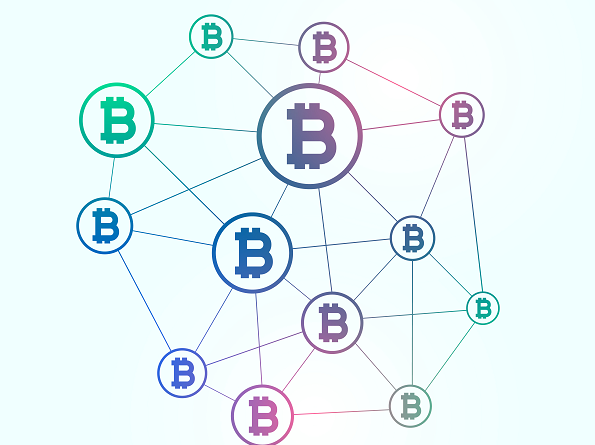What is R: A short guide for beginners

In 1992, two professors at the University of Auckland began working on a statistical computing software, which could overcome the shortcomings of existing software. These professors were Robert Gentleman and Ross Ihaka, and they ended up creating R, a software and programming language. It was first put into use by the university in their teaching lab. Subsequently, it was released to the public and has enjoyed considerable success.
Today, many statisticians, data scientists and analysts swear by R. They use it for data interpretation and visualisation (charts and graphs). R’s dedicated user base consists of Facebook, Twitter, Google, Uber, and Airbnb to name a few. Sounds like a fine language, right? Let’s find out what makes R so wildly popular.
What are the features of R?
1. It is a free and open-source software
Although it wasn’t originally intended to be free, Dr. Martin Mächler, a member of R’s Core Development team, convinced the creators to make it a free software in 1995. This has resulted in making it more robust and useful, because the bugs are more frequently addressed and exciting new features are released as well.
As an open-source software, its source code can be modified to suit one’s needs. You can also use functions, data, and code created by others to improve your experience. These are called R packages and they are available on CRAN (Comprehensive R Archive Network). This has created an active R community with contributions from diverse fields.
2. It can be used across different platforms
R is a platform-independent language which can run on any operating system.
3. It can create stellar graphics
This is one of the most winning features of R. It can be used to create all kinds of graphs, be it histogram, doughnut, or heatmap. You can use the existing packages in R or install packages like ggplot2 to enhance your experience.
This feature is also used to create magnificent data art such as this:

4. It can communicate with other programming languages
R can call C, C++, Fortran, Python, and Java. You can also connect to various database systems such as MySQL and Oracle.
5. It can interact with different interfaces
R can be used in a command line interface or Graphical User Interface (GUI) such as RStudio.
Do I have anything to worry about while using R? What are the limitations of R?
1. It can use a lot of memory
Data has to be stored in physical memory which can be infeasible for large datasets.
2. It runs slower compared to its contemporary counterparts
R uses an interpreter. For programming noobs, an interpreter is a computer program that converts the code into a machine-readable format line by line, which can cause the code to run slower. So, you will need to optimise the code in order to make it run faster. You can also use other variations of R such as Microsoft’s R.
How does R compare to other tools?
1. R vs Excel
Both R and Excel are popular tools for statistical analysis. Excel is often the preferred one due to its friendly point and click interface. However, R can be a more effective tool if you are handling large datasets. It also offers better visualisation, which can be useful to understand complex data.
2. R vs Python
R and Python are among the top programming languages for data analysis and AI.
R was primarily created for statisticians by statisticians. While it offers extensive features for data analysis, the syntax readability isn’t great, and it can be time consuming to learn especially for a programming beginner. Python, on the other hand, was developed as a general-purpose language. It has an easier syntax and can be learned more easily.
While Python will come handy if you want to work in programming-oriented fields such as automation and robotics, R is going to serve you better in the field of academia, medicine, finance, and marketing.
What are the uses of R?
R is used by over 2 million people worldwide in the following ways:
1. Academic research
R is commonly used in the field of social and behavioural sciences for statistical computing. It is also being increasingly used in other disciplines like ecology and astronomy.
2. Banking and finance
Risk analysis and management, stock market predictions, and financial reporting are some of the common applications.
3. Medicine
R has proven to be useful in the fields of genetics, bioinformatics, and drug advancement.
4. Marketing
E-commerce platforms such as Amazon use R for product suggestions. Similarly, it is also used on social media for targeted marketing.
Now that you know about it’s wide-ranging applications, let’s find out how you can explore your interest in R.
How to learn R?
1. Online courses: There are myriad free courses that you can take advantage of (all hail the internet!). However, sometimes that can leave you feeling overwhelmed with no concrete idea of your progress. That’s when Internshala Trainings reports for duty!
Internshala’s R programming training is designed for anyone who wants to learn R from scratch. You can dive right into it without any coding experience (we can hear that sigh of relief).
2. Online resources: While learning R, there is a wealth of resources that you can profit from. Here are a few of them:
I) R Seek: This is the Google for all things R. It acts as an advanced filter to help you find the most relevant results for your queries. Just seek and you shall find!
II) Mailing lists: The first R mailing list was created in 1996. The suggestions resulting from this exchange helped in releasing the first version of R to the general public in year 2000.
Today, there are numerous mailing lists for different R moods and interests! You can learn about them here and subscribe to a few here.
III) Blogs and online communities: Blogs like Rweekly curate a weekly digest including tutorials, blogs, and podcasts. This can give you an overview of the R community and help you in creating your own list of go-to resources. Other popular blogs include Rbloggers, Microsoft’s Revolutions, FlowingData, and Civil Statistician.
Online forums can help you feel more engaged while learning. Few favourites include StackOverflow, RStudio Community, and R Language Community.
IV) Books: As old school as it may sound to learn programming from books, you may be missing out if you don’t cast a glance at it. Beginner-friendly books include Hand-On Programming with R, R Cookbook, and R in Action.
3. Internships: If you are already acing your tests, then it’s time to rev up your learning journey with internships! You can apply for internships in statistics or data science on Internshala.
This was a sneak peek into the buzzing world of R. If you want to learn more, then you can check out Internshala’s R Programming Training. You can use the coupon code BLOG10 to get a discount of 10%, and begin your adventuRe!
Image credits: https://www.data-to-art.com/



